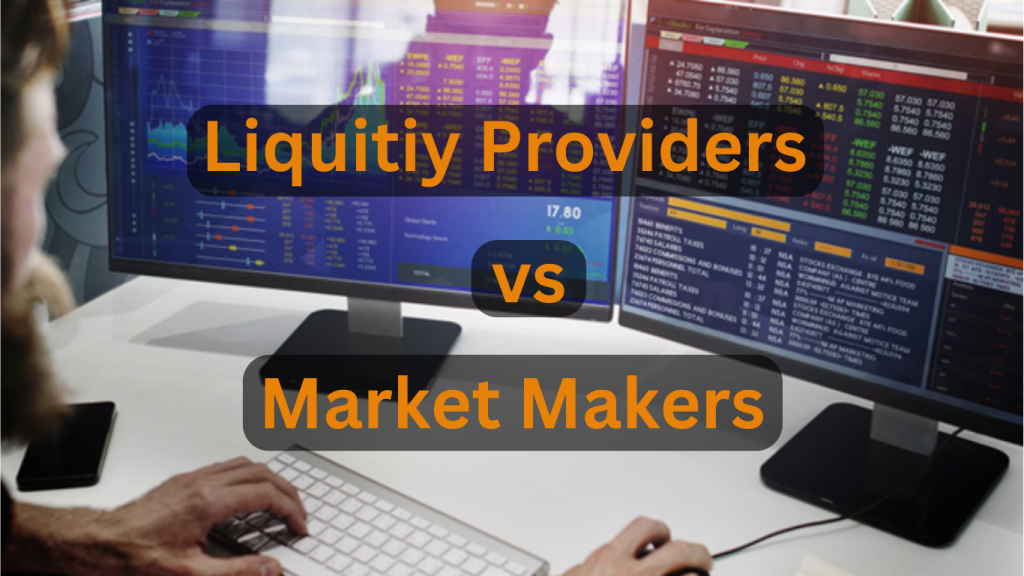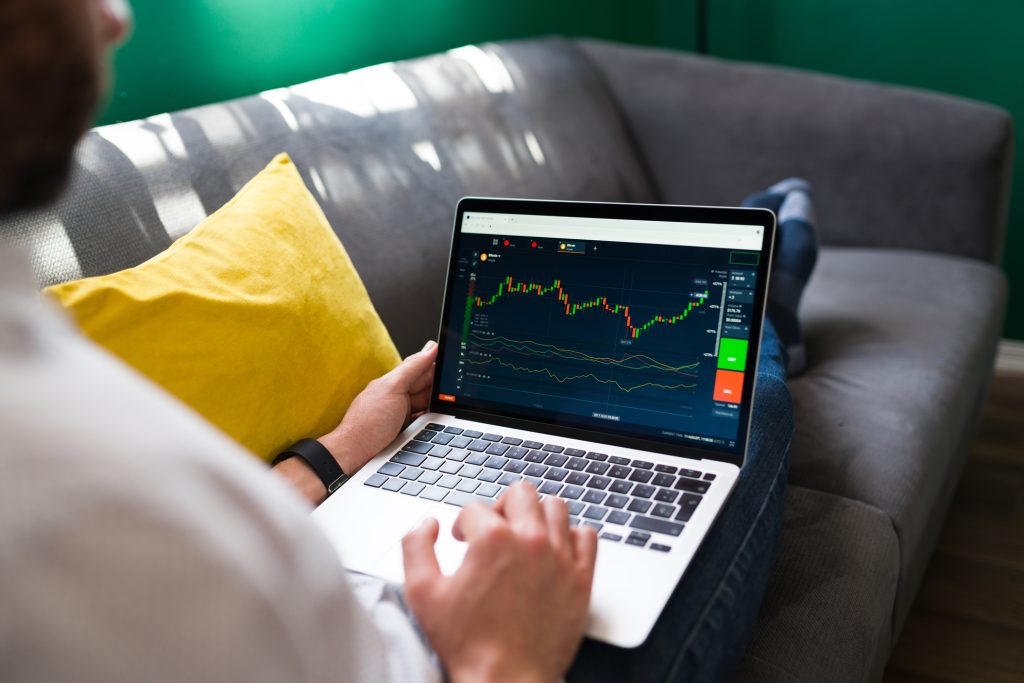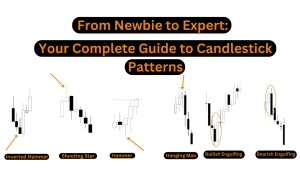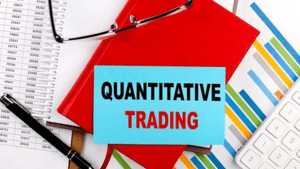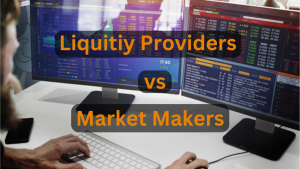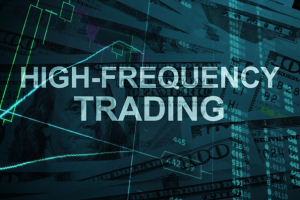Liquidity Providers and Market Makers The world of financial markets is a complicated mix of different parts that work together to make sure trading happens smoothly for all kinds of financial stuff. One important part of this system is liquidity, which is provided and managed by liquidity providers and market makers.
In the complex world of financial markets, it’s essential for investors and traders to grasp the differences between liquidity providers and market makers. Liquidity, often called the lifeblood of financial markets, means how easily an asset can be bought or sold without affecting its price much. Both liquidity providers and market makers are crucial for keeping markets running smoothly, but they have different goals and methods
Importance of Liquidity in Financial Markets
Before we go into details, it’s important to understand how crucial liquidity is in financial markets. Liquidity makes it easy for investors to buy and sell assets quickly, which lowers costs and keeps prices stable. If there isn’t enough liquidity, markets can become unstable, with wider price differences between buyers and sellers and more unpredictable prices. This can scare off investors and make it harder to determine fair prices
Liquidity Providers and Market Makers: What’s the Difference?
This article makes sense of who liquidity providers and market makers are, what they mean for financial business sectors, and how they vary from one another. Furthermore, this article will likewise examine the advantages of working with every one of these wellsprings of liquidity.
What are liquidity providers and market makers?
Financial organizations, called liquidity providers, lend money to financial services firms for trading in the market. These organizations can be individuals or big companies. They usually provide liquidity by placing lots of orders in the market, which helps keep things balanced when there’s a lot of trading happening. With more liquidity, the gap between buying and selling prices (called spreads) and trading costs goes down, which makes trading in financial markets easier.
Liquidity providers are important players in the financial market. They have access to a network of funds, financial institutions, and big banks that make up liquidity pools or quotes. From these pools, liquidity providers offer liquidity to other market participants, like trading platforms and brokers, at market prices.
Big companies and banks are usually seen as the main sources of quotes in financial markets because they have a lot of money. For example, JPMorgan and Morgan Stanley are some of the biggest and most important liquidity providers in today’s financial markets.
Market makers are like big traders, such as investment banks and brokerage firms, who create a market for an asset and try to keep it liquid no matter what. Changes in the market can have a big impact on the whole financial industry. Over time, the financial system has become more automated, with traditional market makers being replaced by computer programs that use fancy math to make quick decisions.
In today’s markets, artificial intelligence (AI) acts like a market maker by making sure trades happen smoothly and providing instant liquidity using math. Programs that can process up to 1 million orders at once have revolutionized trading. These systems have opened up new possibilities for trading and allowed for the development of technologies to improve market liquidity.
Types of Liquidity Providers
Individual Traders as Liquidity Providers
Regular folks who trade, also known as retail investors, can also add to the liquidity, especially in big markets like Forex or major stock markets. When they buy and sell with limit orders, they’re helping to keep the market running smoothly and making sure trading stays organized.
Institutional Investors as Liquidity Providers
Big investors like hedge funds, asset managers, and special trading companies are important for keeping markets liquid. They use smart trading methods and high-tech tools to offer liquidity for different types of assets and places where trading happens. These big investors are key to making sure markets stay strong, even when things get a bit shaky.
Characteristics of Liquidity Providers
Quick Reaction to Market Changes
Liquidity providers quickly adapt to changes in the market, adjusting their prices and strategies as needed. Their ability to respond fast to new information or changes in how investors feel is important for keeping markets running smoothly and avoiding problems.
Using Advanced Trading Strategies
Most liquidity providers use fancy trading methods and tools to make their trading better. They might use things like fast trading, math tricks, or strategies that don’t depend on market direction. With these smart tools and techniques, liquidity providers can trade better and stay ahead in the market.
Benefits of Liquidity Providers
Reduced Bid-Ask Spreads
One big plus of liquidity providers is that they make the difference between what buyers offer and sellers want (called bid-ask spreads) smaller. This means trading costs less for everyone involved, making the market work better and easier for people to use.
Increased Trading Volume
Liquidity providers are crucial for making more trades happen and boosting the overall volume of trading in the market. Because they’re always there, investors feel secure about making trades, knowing they can easily find someone to trade with. This makes the market busier and more active, bringing in more people and making it even easier to trade.
Challenges Faced by Liquidity Providers
Liquidity providers, even though they’re super important for keeping the market running smoothly, have a bunch of problems to deal with. These problems can really make it hard for them to do their job right and might include:
Market Volatility
One big problem for liquidity providers is when the market gets really unstable. Fast and big changes in prices can mess up how trading works, making it harder to predict what will happen next. When the market is extra volatile like this, liquidity providers might struggle to keep up and might end up losing money or not making as much.
Regulatory Constraints
Following rules from regulators is a big challenge for liquidity providers, especially in heavily regulated markets like stocks or derivatives. Keeping up with all the complicated rules and changes can make things harder and more expensive for liquidity providers. Plus, when rules change or regulators crack down, it can make it tough for liquidity providers to do their job well and keep the market running smoothly.
Roles and Responsibilities of Market Makers
Market makers are really important for keeping trading running smoothly and in order. Their jobs include:
Providing Continuous buy-and-sell prices
A big part of what market makers do is to always offer prices for buying and selling the assets they deal with. By giving fair prices, they help people trade quickly and at the right rates, making the market work better and faster.
Absorbing Excess Supply or Demand
Market makers also act as buffers against excess supply or demand in the market by adjusting their quotes in response to imbalances in order flow. When there’s a lot of buying or selling happening, market makers can step in to help balance things out. This keeps prices steady and stops them from going up or down too quickly.
Types of Market Makers
Market makers can be put into different groups depending on what markets they work in and who they serve. Some of the usual types of market makers are:
Retail Market Makers
Retail market makers help regular people who invest or trade by making sure there’s enough money available on retail trading platforms or at brokerage firms. They usually deal with things like stocks, currencies, or commodities that are traded a lot, and they offer good prices and fast trading services to their customers.
Wholesale Market Makers
Wholesale market makers work in big, professional markets, helping out large financial companies, hedge funds, and special trading firms. They usually focus on certain types of assets or places where trading happens, and they use fancy technology and tools to offer lots of money for trading.
Tools and Strategies Utilized by Market Makers
Market makers use different tools and strategies to make trading easier and manage their risks well. Some common tools and strategies they use are:
Algorithmic Trading
Market makers are using computer programs more and more to automatically offer prices and make trades. These programs look at what’s happening in the market right now, find chances to trade, and change prices quickly to stay competitive and safe
Risk Management Techniques
Managing risk is really important for market makers because they face different kinds of risks, like market changes, not having enough money to trade, and problems with how they do things. They use smart techniques like hedging, spreading out their investments, and keeping an eye on their positions to lower these risks and keep their money safe
Advantages of Market Makers
Market makers are really important in financial markets and bring lots of benefits that help trading happen smoothly and make sure there’s enough money available.
Ensuring Price Stability
The big advantage of market makers is that they help keep prices stable. They do this by always offering prices for buying and selling financial stuff, which stops prices from changing too much and keeps trading organized. This stability is really important for investors and traders because it makes the market less uncertain and helps them feel more confident about trading.
Facilitating Smoother Transactions
Market makers make trading easier by offering lots of money to trade and making the gap between buying and selling prices smaller. This means people can buy or sell stuff quickly and at good prices without waiting for someone else to trade with them. It makes trading smoother and faster, so investors can make their trades easily.
Disadvantages of Market Makers
Potential for Market Manipulation
One big worry with market makers is that they might manipulate the market. Because they have a big impact on how much money is available and the prices, market makers could do things like flood the market with fake orders, pretend to buy or sell, or trade before other people to make prices go in their favor. This kind of behavior can damage the market’s fairness and make investors lose trust.
Dependency on Order Flow
Market makers make a lot of their money from the orders they get, so when things change in the market or investors start acting differently, it can affect them a lot. If there’s less trading or if people start trading differently, market makers might not be able to keep up with offering money to trade, which could make the prices they offer further apart, or they might not trade as much. Because market makers rely so much on the orders they get, they’re at risk when things change in the market.
Regulatory Framework for Liquidity Providers and Market Makers
The rules that control liquidity providers and market makers are different depending on where you are, but they usually include:
Compliance Requirements
Liquidity providers and market makers have to follow strict rules, like getting licenses, registering, and regularly reporting what they do. They need to obey all the laws, rules, and standards that control how they act in the market. This includes making sure they don’t manipulate the market, protecting investors, and keeping the market fair.
Regulatory Oversight
Regulatory authorities, like financial regulators and stock exchanges, watch over liquidity providers and market makers to make sure they follow the rules and keep the market fair. They keep an eye on what’s happening in the market, check for any bad behavior, and make sure everyone plays by the rules to keep financial markets safe and stable.
Real-Life Examples of Liquidity Providers and Market Makers
Looking at real-life examples of liquidity providers and market makers in different financial markets helps us understand how they work and what effects they have on the market.
Case Studies from Various Financial Markets
Example 1: Equity Markets
In stock markets, companies like Citadel Securities and Virtu Financial are well-known market makers. They use fancy technology and their own trading methods to offer money for trading and make it easier to trade stocks, ETFs, and other similar products. Because they’re always there, it makes prices closer together and trading easier, which helps both big investors and regular people who invest.
Example 2: Foreign Exchange (Forex) Markets
In the foreign exchange markets, big banks and financial companies offer prices for different currencies and make it easier to trade them. Banks like UBS, Deutsche Bank, and JP Morgan are some of the top companies that do this, offering prices for popular currency pairs and making sure trading happens smoothly for everyone involved.
Example 3: Cryptocurrency Markets
In the fast-changing world of cryptocurrency, market makers are really important for making trading easier and keeping the market running smoothly. Companies like Jump Trading and Alameda Research are big names in this area, offering money for trading different digital currencies on different platforms. What they do helps keep prices steady and stops them from changing too much in the often unpredictable world of cryptocurrency.
Analysis of Their Impact on Market Behavior
The presence of liquidity providers and market makers affects how the market works in important ways:
- Keeping Prices Steady: Market makers help keep prices stable by always offering to buy and sell, which stops prices from changing too much.
- Making Trading Easier: Liquidity providers make trading smoother by making the gap between buying and selling prices smaller and making sure orders get filled quickly. This helps people trade more easily and find the right prices.
- Making Sure There’s Enough Money to Trade: Market makers make sure there’s plenty of money available for trading by being ready to buy and sell at good prices. This makes the market deeper and easier for investors and traders to use.
The Future of Liquidity Providers and Market Makers
The future of liquidity providers and market makers depends on technological advancements and how the market changes.
Technological Advancements Shaping the Industry
- Algorithmic Trading: Market makers are using computer programs more and more to trade automatically and make trading faster and more efficient.
- Machine Learning and AI: Better technology lets market makers look at big sets of data and find chances to trade more accurately.
- Blockchain Technology: In cryptocurrency, blockchain technology is changing how market makers work, with decentralized exchanges and automatic market makers becoming more popular.
Potential Changes in Market Structure
- Regulations: Changes in rules might affect how liquidity providers and market makers work and make money, especially regarding things like how clear the market is, how orders are handled, and who can trade.
- Market Changes: With more markets popping up and trading happening in different places, it might be harder for liquidity providers to keep up and offer money to trade everywhere.
Key contrasts and qualities between liquidity providers and market makers:
In today’s financial markets, liquidity providers and market makers are responsible for making sure there’s enough money available for trading, keeping trading volumes up, and making sure trading happens smoothly. Both of these important players in the market do similar jobs, but there are some differences between them, which we’ll explain below.
Liquidity provider:
In Crypto:
Assuming we consider the famous cryptocurrency market in terms of liquidity providers and market makers, we can say that liquidity providers contrast in one essential angle. Gives liquidity. The request book system depends on the bid-ask spread. Conversely, liquidity pools use store resource coordinates like BTC/USDT, BTC/DAI, and BTC/USDC.
Any personnel who offers the fitting resource pair can lay out a liquidity pool and add liquidity to any pool. Each set of tokens has another market provided by these pools of resources. The underlying expense of these resources is not set in stone by the personnel who lay out the pool and make the underlying bid for the resource pair. They, like all resulting liquidity providers, are engaged in guaranteeing that the pool has a similar incentive for the two tokens.
Market maker:
Financial market members are going about their business as market makers keep markets dynamic by constantly getting ready to go into trade with other market members. A market maker can likewise be depicted as a broker answerable for keeping up with the value, request, supply, and trading volume of a financial instrument, money, or ware under an agreement. Level 1 and Level 2 gatherings are two classifications that market makers can be categorized into.
Level 1 Market Maker:
The market makers in this gathering are the biggest business banks. They are at times called institutional market makers (IMMs) and work with trades to agree and acknowledge responsibilities to guarantee resource turnover and harmony among organic markets. These sellers incorporate organizations that control financing costs, trade rates, and business banks. Among them could be huge banks, stock exchanges, financial houses, enormous assets, and well-off people.
Level 2 Market Maker:
This gathering of market makers works with their liquidity. They work under the B-book model, taking the opposite side of a client’s trade without passing the request to a liquidity provider.
For the various kinds of market makers, it is critical to take note that trade members fall into the classification of speculative market makers. These market members (like little banks and retail financial backers) hold a lot of resources that create sensible cost forces when they trade.
Outside market makers are an option, in contrast to conventional market makers. In contrast to a liquidity provider, the “party” in this present circumstance is generally a mutual fund, which goes about as an arbitrageur that gets liquidity from different trades by covering positions in different business sectors. Market makers arrange concurrence with the trades they work on and normally request a specific benefit in return for providing liquidity. If a market maker’s benefits fall under a foreordained limit, the trade will frequently compensate for any shortfall after a settlement.
The distinction between the best-offered value (the greatest cost a purchaser will pay for a resource) and the best ask value (the best or most reduced selling cost for a resource) is where they make their pay, and this is the offered ask spread. All in all, following through on a minimal expense for a resource and afterward charging an exorbitant cost. In any case, as the spread expands, the amount traded diminishes, expanding the amount market makers procure on a specific trade. The outcome is a longer time between trades and a higher gamble. Other market makers can bring in cash on their positions (conceivably sooner than the first market maker).
FAQs (Frequently Asked Questions)
What is the primary goal of liquidity providers?
The primary goal of liquidity providers is to enhance market liquidity by offering continuous quotes and depth to the market, thereby facilitating smoother trading operations and improving price discovery mechanisms.
How do market makers profit from their activities?
Market makers profit from the spread between the bid and ask prices they quote for financial assets. By buying at the bid price and selling at the ask price, market makers capture the spread as their profit margin.
Can anyone become a liquidity provider or market maker?
While anyone can technically become a liquidity provider or market maker, the barriers to entry vary depending on the market segment and regulatory requirements. Institutional investors, high-frequency trading firms, and specialized market-making firms dominate the market-making landscape due to their access to capital, technology, and expertise.
What risks do liquidity providers and market makers face?
Liquidity providers and market makers face various risks, including market risk, liquidity risk, operational risk, and regulatory risk. Market volatility, sudden shifts in order flow, technological failures, and regulatory changes are among the key risk factors that can impact their profitability and stability.
How do liquidity providers and market makers affect retail traders?
Liquidity providers and market makers play a crucial role in enhancing market liquidity and execution quality for retail traders. By offering competitive spreads and ensuring ample liquidity, they enable retail traders to execute their trades efficiently and at favorable prices.
Are liquidity providers and market makers the same as high-frequency traders?
While liquidity providers and market makers may engage in high-frequency trading (HFT) strategies, they are not synonymous with high-frequency traders. Market makers focus on providing liquidity and facilitating trading, whereas high-frequency traders may employ various trading strategies, including market making, arbitrage, and statistical analysis, to profit from short-term price movements.
Conclusion:
In short, Like liquidity providers, market makers are the foundation of any market and create the important circumstances for all trading components to appropriately work. By giving liquidity to the market, we keep up with the degree of trading volume important to complete resource buy and deal trades rapidly and helpfully.
liquidity providers and market makers are integral components of financial markets, offering liquidity, stability, and efficiency. Real-life examples from equity, forex, and cryptocurrency markets illustrate their impact on market behavior and the role they play in facilitating trading operations. The future of liquidity provision and market making is shaped by technological advancements, regulatory developments, and changes in market structure, underscoring the importance of adaptability and innovation in this dynamic industry.

